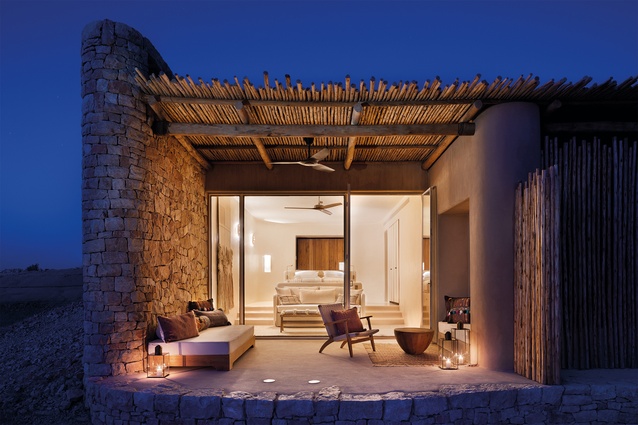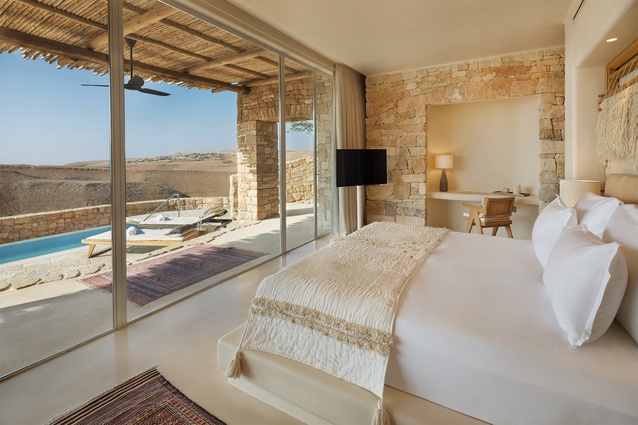Hotels in flux: Part two
In part two of our series on the evolution of the hotel industry in New Zealand, director of interior design powerhouse Space Studio, Vee Kessner, reports on the synergy of design and procurement in a changing industry.
[Editor’s note: This series about the future of the hotel industry was produced for print publication and mostly before the COVID-19 pandemic. As such, a lot of the statistical figures and trend forecasts have and will continue to change drastically due to the closure of international borders, lockdown and the financial repercussions of both. Parts of this series will be updated with current, post-pandemic information and we will make a note if and when the online version of the article differs from the published version.]
International hotel brands, lifestyle hotels and boutique resorts want to be sustainable, authentic and connected with place to provide guests with rich, localised experiences.
To deliver on this, the challenge for designers is to design with a deep understanding of local culture and materials when working remotely and then being able to execute the design sustainably. In this aspect, when design and procurement work closely together, a more authentic and sustainable outcome is achievable.
When methods of procurement are front of mind in the design process, the details and material selection are able to be robust through the many project management stages before construction proceeds. With construction increasingly drawing upon the global supply chain and hotels all prioritising connection with their localities, it becomes a delicate balancing act of delivering the project on time and on budget, while still incorporating and supporting local skills and expression. The integration of procurement into a design business is a trend being adopted by more design companies around the world to achieve better outcomes.
The tourism industry has increasingly embraced the need to act responsibly for the health of our planet. Major international brands have developed programmes that address this from design through to operations. Here are some examples of these initiatives:
Accor’s Planet 21 is a sustainable development programme. Ecodesign is one of the four pillars of that programme requiring design and the procurement of that design to consider sustainable aspects of materials integrally. The extension of the Novotel Hamilton, for example, incorporated the narrative of the Waikato River into the design of the rooms. Designer and procurement agent worked closely to develop a design that spoke to place and was locally produced and implemented.
IHG has the Green Engage system, one aspect of which is to support a responsible procurement strategy. To achieve this, design must be cognisant of the methods by which the design will be delivered. Marriott’s Serve 360 programme includes Supplier Conduct Guidelines.
Six Senses, a relative newcomer to internationally branded resorts, seeks to combine the desire to deliver local experiences with ongoing sourcing and support of local communities. As an example, tableware and consumables at Six Senses Fiji is sourced from an initiative to support women into employment – Rise beyond the Reef. To achieve this, the design and the procurement must have deep understanding of the region to deliver with authenticity and sustainability.
The challenges:
- Local production versus sourcing from Asia – international design standards and materials are readily sourced offshore and labour costs often make this an attractive alternative. The impacts of the current (at the time of printing) closing of the world’s engine room following the coronavirus may change the economics of this option. Once manufacturers are open again for business, the backlog of production and shipments may push pricing and time frames beyond acceptable parameters.
- Utilising local producers and artisans can involve limited capacity and capability, depending on the region. Both designer and procurement agent must work closely in this aspect.
- Location and scale are significant. While a project may have scale, a remote location will have an impact on procurement options. For example, while the Hilton Kawarau was a significant development of scale, the location precluded sourcing from Asia as a result of freight cost implications.
The goal is to seek skills that are unique to a region; these, undoubtedly, will render design opportunities and an authentic sense of place, and sustain local communities.
Gibbston Valley is a good example of where the designers and procurement agents worked in close collaboration and engaged local artisans to complete lower-volume, highly customised elements, such as door handles, artwork, detailed joinery, furniture and stone masonry.
Understanding local sourcing, local materials, cost constraints and capacity constraints is the challenge. Regional expertise in design and procurement is key. When these two aspects of a project are in unison, the whole is greater than is the sum of its parts.
Click here to see more from the Hotels in flux series.











